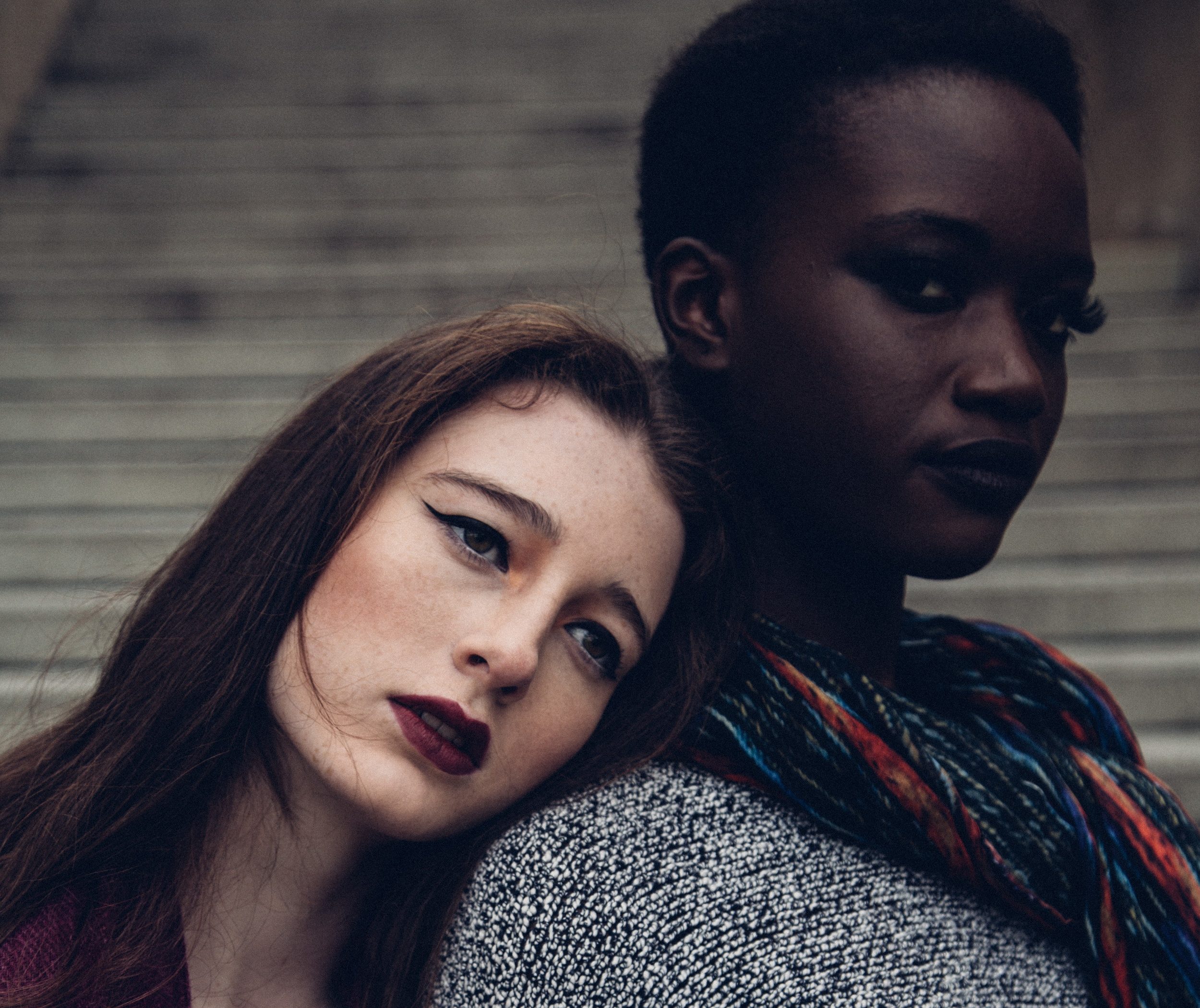I still remember reading an essay in my freshman year poetry workshop that described a woman’s nails as “unpainted, like a poet’s.” I recall looking down at my gold glitter nail polish and feeling frivolous like I wasn’t serious enough to be a part of the art form. Throughout my four years studying poetry in college, I met a few others who similarly dismissed a connection between poetry, fashion, and beauty: professors who scowled when women applied lipstick, or poets who insisted on dressing plainly so the focus would be cemented solely on their work.
But my junior year of college, my mentor gave me a pair of her vintage Betsey Johnson earrings. These earrings were gaudy and over-the-top: a long, dangly mess of fake pearls, gold bows, and rhinestones. They got tangled up in my other jewelry. They somehow went with both everything and nothing. And I absolutely loved them.
Still to this day, when I put on these earrings and feel their heavy tug, I’m reminded of my mentor and how she infuses her poetry with femininity and glamour, never shying away from what makes her work sparkle or striving to fit conventions.
In the same way, poets like Sally Wen Mao, Saeed Jones, Eve Ensler, and others see the daily act of dressing as poetic inspiration, using it to create imagery, setting, and to make a powerful statement about the way they present themselves in the world. Poems like Jones’s “Boy in a Stolen Evening Gown” blur the gender binary and help the speaker make both sense and celebration out of “the chiffon body [they’ve] borrowed.” Meanwhile, Ensler uses the popular image of a short skirt to rally against both violence and sexist assumptions, writing “It is not an invitation / a provocation / an indication” and, later, “My short skirt is my defiance.”
Speaking to this purpose, in 2018, poet Monica McClure wrote, “Fashion culture practices social listening — plugging into collective dreams; it seeks to resonate with the culture in order to influence or illuminate it. In that sense, and others, fashion is more than a language; it’s poetry.”
Those in the fashion world are similarly taking notice of this connection. Just this year, Valentino introduced the label’s fall/winter collection in a collaboration with four poets: Yrsa Daley-Ward, Mustafa the Poet, Greta Bellamacina, and Robert Montgomery. Their poetry appeared on Valentino’s garments and in a book called Valentino on Love. The project paired designs with verses that captured the meaning of love as envisioned by these unique, ground-breaking, and modern voices.
For instance, Daley-Ward had a beautiful, simple take, like a classic but unmistakable design: “If there’s an answer, it’s you.” Montgomery, who defines his work as “conceptual art” looking to blend form with “poetic discourse,” created a text sculpture with the words, “I want to wake up in your arms for a hundred years.” This mirrors Montgomery’s other work, which imagines poetry off the page, including billboard poems, poems in lit up signage, and watercolor poetry. With poetry that literally crackles beneath fire, Montgomery brings fashion’s avant-garde spirit into the poetic realm.
Just as Valentino drew inspiration from poetry, so does Chicago-based blogger Monika Latala, better known by her blogger handle Effie’s Dress. The handle comes from the E.E. Cumming’s poem “Here is Little Effie’s Head,” which Latala says emphasizes themes like fearlessness and statement-making that characterize her sense of fashion..
Wilson Oryema, who’s achieved recognition as both a fashion designer and poet (publishing his first collection, Wait, in 2017), uses both mediums to assert a political message. He strives to communicate his ideas on “consumption and the way it affects human behavior and the environment.” He draws on images that resonate in both the fashion and literary spheres. In a poem written exclusively for The Fashion, The Guardian’s fashion magazine, he says of spring, “Spring is here / The world once again being bathed in color.” Though this reminds readers of blooming flowers and brighter skies, it also seems to invoke the pastel dresses that wade through the season.
Of course, just as these talents work to bring poetry and fashion into a cultural conversation, some critics push back against this relation. David Orr, author of the column “On Poetry” for The New York Times Book Review, called an O Magazine feature where emerging poets modeled spring fashion a “sign of the coming apocalypse.”
But in a time where best-selling poets claim seats at New York Fashion Week and inspire Pinterest boards dedicated to both their words and their style, a new message seems to be strutting center stage: Poetry is in fashion, and it looks fabulous.




